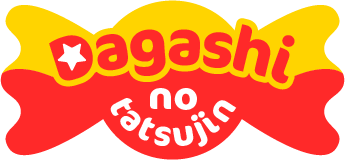
5 Ghibli-Inspired Japanese Snacks to Try
Table of Contents
Ever wondered if some Japanese snacks could come straight out of a Studio Ghibli movie? Whether you’re planning a trip to Japan or exploring from home, these five treats carry that same gentle magic fans love.
What are Ghibli-inspired Japanese snacks? Think of them as snacks that reflect the same gentle imagination found in Ghibli films — even without an official tie.
Why Ghibli-Inspired Snacks Resonate with Fans
Some Japanese snacks feel like they’ve stepped right out of an animated world. In Japan, sweets are more than just delicious—they blend flavor, visual charm, and thoughtful details that invite imagination.
These five treats aren’t official Studio Ghibli products, but they echo the nostalgic warmth and quiet wonder seen in films like Spirited Away and My Neighbor Totoro. From jewel-like candies to acorn-shaped chocolates, each one offers a gentle sense of magic.
For travelers and Ghibli fans around the world, these snacks offer a small, delightful way to experience Japanese culture—through taste, design, and imagination.
The 5 Ghibli-Inspired Japanese Snacks to Try
We’ve picked snacks that echo the soft colors, shapes, and moods found in Studio Ghibli films. Whether you’re shopping online or exploring Japan, these sweets add a gentle bit of story to your snack time.
Konpeitō – Colorful Sugar Candy from Spirited Away

Konpeitō (こんぺいとう) is a traditional Japanese sugar candy seen in Spirited Away as a gift to soot sprites. This star-shaped treat, first brought from Portugal during the Muromachi period, now comes in flavors like sugar, peach, apple, grape, and cider.
Their bright colors and tiny crystal shapes make them as fun to look at as they are to taste.
Sakuma Drops – A Classic Candy from Grave of the Fireflies

Sakuma Drops the classic hard candy from Grave of the Fireflies, first appeared in 1908.
Each red tin holds eight fruity flavors — strawberry, peppermint, apple, plum, lemon, melon, orange, and pineapple — each with its own shape. Loved for over a century, Sakuma Drops still feel like a small piece of old Japan in every tin.
Donguri Picnic – Acorn-Shaped Chocolates Inspired by Totoro

Donguri Picnic is a chocolate snack shaped like tiny acorns, bringing to mind the forest world of My Neighbor Totoro.
Inside each one is a light puff and almond center that add a satisfying crunch. It feels like something you’d pack for a small forest adventure — just like Totoro’s world.
Kirara Kohakutō – Edible Jewels with a Magical Glow

Kirara Kohakutō a crystallized sugar sweet that looks like a handful of tiny gems. It comes in flavors like strawberry, ramune soda, apple, white peach, and grapefruit.
With a crisp shell and soft jelly inside, it’s easy to see why people call them “edible jewels” — they look like something you’d find in Howl’s Moving Castle.
Nyantoka Shite Kero – Mint Candy in a Cat-Shaped Cup

Nyantoka Shite Kero comes in a small cat-shaped cup filled with mint candies. There’s also a frog version, but the black cat design feels especially reminiscent of Jiji from Kiki’s Delivery Service.
With its playful look and pocket size, it’s the kind of treat that cat lovers can’t help but smile at.
Love the charm of Ghibli-inspired snacks? Get similar Japanese treats every month!
Subscribe Now →How to Enjoy Ghibli-Inspired Japanese Snacks
If you’re planning a trip to Japan, you can find many of these snacks in convenience stores, supermarkets, or specialty confectionery shops. For fans outside Japan, they’re also available through online stores that ship internationally.
Here are some ideas to enjoy these sweets:
• Pair them with Japanese tea for a quiet afternoon break.
• Share them as souvenirs with friends and family who love animation or Japanese culture.
• Add them to a themed movie night to create an immersive Ghibli experience.
Whether you’re buying them as a treat for yourself or as a thoughtful gift, these snacks offer a simple way to connect with the charm of Japanese design and flavors.
Why These Snacks Feel So Japanese
In Japan, sweets are more than just food. They often carry small stories, seasonal themes, and delicate designs that reflect care and thoughtfulness. This mindset is also part of what makes Studio Ghibli films so memorable.
Key elements that make these snacks feel “Ghibli-inspired”:
• Thoughtful packaging that feels like a gift
• Seasonal and natural motifs, like acorns and stars
• A sense of quiet, everyday joy that connects to tradition
For international fans, exploring these treats offers a glimpse into Japanese culture’s love for detail and storytelling—values that feel very different from most Western sweets.
✨ Recommended read
Pokémon Snacks That Fans Love →Conclusion: A Sweet Way to Experience Japan’s Culture
These five Ghibli-inspired Japanese snacks are more than just treats. They offer a chance to enjoy thoughtful designs, delicate flavors, and small cultural details that make Japanese sweets so unique.
Whether you’re exploring Japan in person or ordering online, these snacks can bring a little piece of that charm into your everyday life. They’re perfect for enjoying with tea, sharing as souvenirs, or simply adding a bit of Japanese storytelling to your snack time.
Ready to discover your favorite? Start with one of these sweets and see how it connects you to the gentle, imaginative spirit of Japan.
Want to discover more unique Japanese snacks? Get a curated selection delivered every month.
Subscribe Now →